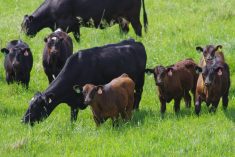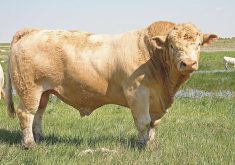During the flooding crisis, Earl Wilson, general manager of the Eastern Irrigation District watched water levels rise higher than he’d ever seen as two of the province’s 13 irrigation districts experienced problems during the floods.
“The amount of water we had at Bassano was 35 per cent more than what they had in Calgary, because we also get the Highwood River in coming downstream of Calgary, which set an all-time record high flow as well, the one that wiped out High River,” said Wilson.
The flow at the Bow River peaked at the Bassano diversion dam at a little more than 4,000 cubic metres per second on June 22 and remained at the peak for more than 20 hours. The previous peak in 2005 was only half that level. Gates were wide open and the water climbed to 1.3 metres above the normal operating level of the dam.
Read Also

Grazing ‘sweet spot’ boosts pasture performance
Timing-focused approach to pasture management touted to boost forage growth, livestock gains while also cutting farmer labour and inputs
The Bassano dam has a “fuse plug” in the clay portion of the dam, allowing clay to be removed so the plug can be washed out and create another channel. “We did remove that clay and we were within half a metre of going into that at the peak flow,” said Wilson.
Debris was also a concern. “We were getting more and more blockage of gates as 60-foot long logs were going across two and three gates at a time. But the dam operated exactly as it was designed 100 years ago and it carried the flow as it should,” Wilson said.
He described the experience of watching the water rise as “nervewracking.” He didn’t leave the dam, and knew that if things got worse, he’d need to cut the fuse plug lower, increasing the capacity of the dam by another 25 per cent. Government gauges upstream were all washed out, so those at the Eastern Irrigation District had to rely on their instincts.
“There was an 18-hour day with four hours of sleep and then a 42 -hour day the second one,” said Wilson.
Richard Phillips, general manager of the Bow River Irrigation District, said and earth dike near Carseland washed out during the flood.
“As the water levels recede to a more normal level, it’s probable that we won’t have near the depth that we normally have to our diversion structure for our district. We may see a greatly reduced ability to take water from the river once the levels get down to normal levels,” he said. “It’s a little soon to say, but that is a likely outcome.”
Phillips said less than 20,000 acres of irrigation would be affected by this water shortage as there are two large reservoirs downstream that are very close to full. However, “This has the potential to be a significant issue and it will need to be speedily corrected for business to go on next year.”
Roger Hohm, head of the irrigation secretariat with Alberta Agriculture, said there would be problems if the earth dike isn’t repaired and there is a lack of precipitation this July and August combined with hot, dry weather. “In general, we’ve dodged some very large bullets”, said Hohm. The farming portion of the irrigation districts was not greatly impacted from flooding. In fact, many irrigation districts were still experiencing demand from downstream during flooding. Growers were still irrigating, even though their headworks were in flood conditions. There are isolated water ponding problems reported, especially around Coaldale and Taber.















